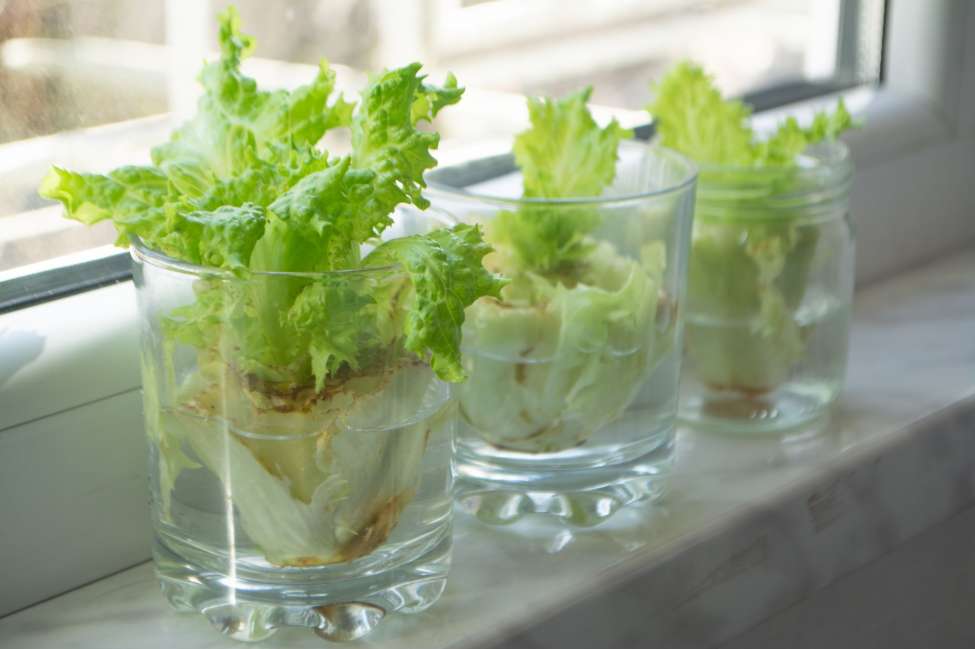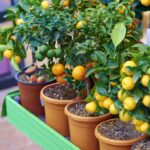| Getting your Trinity Audio player ready... |
One of the oft shared pieces of advice for those finding quarantine hard right now – and let’s be honest, that’s most of us, at least some times – is to find a new hobby to keep us occupied. But that’s hard when access to stores is restricted and venturing too far from home is not advised. Or maybe it’s not. One of the hobbies you can take up is one that calls for no special supplies other than a few pots, a little potting soil and the kitchen waster you were probably about to toss in the garbage; kitchen scrap gardening.
We, as a nation, waste a lot of food every year, produce included. In fact food waste is becoming a serious problem that has been contributing to global warming. And that problem may be getting even worse right now as we are all forced to do possibly more home cooking than we might have done in years.
With this in mind, it’s important to make the most out of your produce—which is where vegetable cuttings – and a concept called kitchen scrap gardening – come in.
The idea behind kitchen scrap gardening is to make use of the produce scraps left over from your latest culinary adventure and regrow them into fresh, tasty new veggies. It’s fun, it saves money and reduces waste, all things that I, as a professional organizer, am certainly in favor of and I’m sure you are too!
If you haven’t done this before, now is a good of a time as ever, when we have more time on our hands and are certainly in need of some happy and creative distractions from all the craziness of the world right now.
Ready to try some kitchen scrap gardening? Here’s how to grow some of your favorite vegetables out of their cuttings.
Lettuce
– Place leftover lettuce leaves in a bowl with a little water in the bottom
– Place the bowl somewhere that gets good sunlight
– Mist the leaves with water a few each week
– Once roots appear along with new leaves, transplant in soil
Celery
– Cut off bottom/base of a celery stalk and lay in a bowl with a little warm water in the bottom
– Place the bowl in direct sunlight
– When leaves thicken and grow along base, transplant your celery in soil
Green onions
– Take green onion roots and put them in a glass with enough water to cover them
– Change water every few days
– In about a week’s time, you will have new green onion
Avocado
– Take seed and wash it thoroughly
– Use toothpicks to suspend the seed over water in a bowl/jar, with enough water to fill bowl/jar to cover bottom inch of seed
– Keep bowl/jar in a warm place but not in direct sunlight
– Check the water every day and add more as needed
– Once stem and roots appear and stem reaches about six inches, cut it down to three inches
– When leaves appear, plant the seed in soil (but leave half of the seed above ground)
Ginger
– Plant a piece of ginger root in potting soil and make sure buds are facing up
– Once new shoots/roots appear, it’s ready to use
Garlic
– Use a piece of garlic and plant it with the roots facing down in potting soil
– Keep the pot in direct sunlight and in a warm place
– Once new shoots appear, cut the shoots back and wait for bulb (which is when it’s ready to use)
Fennel
– Keep an inch of the base of your fennel and place in a container with a cup of water; leave in direct sunlight
– Once roots grow and new greens hoots appear from center of the base, transplant your new fennel
Basil
– Keep a basil stem and place it in glass of water with the leaves above the waterline
– Leave glass in a bright area (but avoid direct sunlight)
– Once roots are a couple of inches in length, transplant in soil
Cilantro
– Keep a few stems of cilantro and place bottom of stem in a glass of water; leave the glass in a bright area
– Once roots reach a few inches in length, transplant in soil
Turnips
– Keep tops of turnip and place in a jar of water
– Once new green tops appear, transplant in soil
*This method works for all root vegetables, including beets and parsnips
Regrowing vegetables from scraps via kitchen scrap gardening is a great way to get the most mileage out of your groceries, and an excellent starting point to combating global warming. It’s also a relaxing, useful hobby that you may find you hold onto long after lockdown is over!
- Top 10 Tips for Linen Closet Organization - October 16, 2025
- The “House Purse”: The Viral Trend That Proves Organization is Self-Care - October 14, 2025
- A Mental Health Month Guide to Decluttering Your Life (And Your Home) - October 9, 2025






